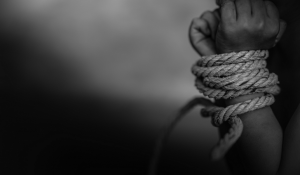2 December: International Day for the Abolition of Slavery
Slavery is not merely a historical relic. It was issue not only in early times (eg ancient Egypt, ancient Rome, Greece, China …) but also in the 21st century even in the world’s most developed countries.
“Modern slavery” is used as an umbrella term covering practices such as forced labor, debt bondage, forced marriage, and human trafficking. Essentially, it refers to situations of exploitation that a person cannot refuse or leave because of threats, violence, coercion, deception, and/or abuse of power.
Despite the fact that today human freedom is considered to be the highest value, slavery still continues to be a threat.
According to International Labor Organization (ILO), more than 40 million people have become victims of modern slavery.
ILO gives statistics that more than 150 million children are subject to child labor. This means that almost one in ten children around the world become victims of exploitation.
In 1948 United Nations General Assembly adopted Universal Declaration of Human Rights, including article stating “No one shall be held in slavery or servitude; slavery and the slave trade shall be prohibited in all their forms.”
The International Day for the Abolition of Slavery, 2 December, marks the date of the adoption, by the General Assembly, of the United Nations Convention for the Suppression of the Traffic in Persons and of the Exploitation of the Prostitution of Others (resolution 317(IV) of 2 December 1949).
The fight is against modern forms of slavery such as human trafficking, sexual exploitation, forced labor, the worst forms of child labor, sale of organ tissue and forced marriage.

Since 2001, US Department of State has annually published TIP (Trafficking in person) report which includes comprehensive information about actions carried out by the governments involved countries: victim support, protection, prevention, awareness, prosecution and recommendations to improve the results for combatting against trafficking.
According to the same Report in 2017, Armenia has been ranked among the first group of countries for five years (since 2013), which means that there is enough work to prevent trafficking and provide assistance to trafficking victims.
Since 2007 the Council on Human Trafficking in Armenia has existed, which cooperating with state, public and international organizations, is actively engaged in combating human trafficking.
Working Group (WG) has been established and operates to organize the current work of the Council. The Working Group develops and afterwards Council approves the National Program on Combating human trafficking in Persons in RA, according to which the fight against human trafficking in Armenia has started in 2002.
“Association of Audio-Visual Reporters” (AAVR) NGO, which is a member of the Working Group on Trafficking, cooperates with state, non-governmental, international and local organizations to combat human trafficking.
Giving great importance to people’s awareness about trafficking, its types, human rights and vulnerability issues AAVR made awareness campaigns in all the provinces of Armenia and Yerevan.
To date by the initiation of “Association of Audio-Visual Reporters” 270 PSAs (Public Service Announcement), 42 documentaries, TV programs and 3 professional guides have been released.
In order to motivate media sphere in the fight against trafficking, annual Journalism Award is being held in Armenia. During the ceremony the best journalistic works, which has been published during the current year, are awarded with prizes.
In order to combat human trafficking and reach desirable results the work of state and non-governmental organizations is not enough, but active involvement of the society is also needed.

About the author